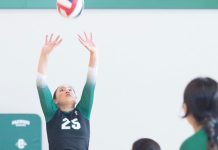There was definitely no
“home course advantage” in last weekend’s inaugural Taylor
Woodrow Grand Prix of San Jose. Despite a huge response from fans
accompanying their every move, both local favorites – Los Gatos
native AJ Allmendinger and Morgan Hill product Jimmy Vasser – ended
up the victims of the capricious
track and failed to finish Sunday’s race. Allmendinger ended up
the early victim of a slippery Turn 4, which claimed several other
drivers, while Vasser busted up his car’s suspension twice on the
jarring course, which ran over light rail tracks for the first time
in the sport’s history. Allme
ndinger finished 17th, while Vasser took 11th.
There was definitely no “home course advantage” in last weekend’s inaugural Taylor Woodrow Grand Prix of San Jose. Despite a huge response from fans accompanying their every move, both local favorites – Los Gatos native AJ Allmendinger and Morgan Hill product Jimmy Vasser – ended up the victims of the capricious track and failed to finish Sunday’s race.
Allmendinger ended up the early victim of a slippery Turn 4, which claimed several other drivers, while Vasser busted up his car’s suspension twice on the jarring course, which ran over light rail tracks for the first time in the sport’s history. Allmendinger finished 17th, while Vasser took 11th.
Both expressed disappointment about not being able to give the fans a better showing, but said the event as a whole was an impressive success.
“It was like the ‘Dukes of Hazzard’ out there,” Vasser said after Saturday’s bouncy qualifying session.
“I crashed (during Sunday’s race) because I can’t drive,” the 26-year-old Allmendinger, a Leigh High grad, said. “Nobody else had a problem.
“But it was an awesome event, for San Jose and the fans.”
Despite a late start on Friday, the problematic racing surface and some fan complaints, few were complaining about the three-day event, which drew an announced crowd of 153,767.
In fact, everybody seemed uniformly upbeat, especially the drivers, despite the handful of first-event snafus that included a four-hour delay on the first day of racing due to last-minute construction details, a slick, bumpy track that befuddled drivers, and a few fan management problems.
Grand Prix General Manager Bob Singleton called the event a major success despite the setbacks, and vowed to work with the city on improving the event’s logistics for future years. And, Singleton and Champ Car race winner Sebastien Bourdais said the event got the thumbs-up from a particularly influential fan.
“We talked to the Mayor (Ron Gonzales at Sunday’s Champ Car pre-race driver’s meeting) and he said you can have whatever you want next year,” Bourdais said.
Singleton admitted Grand Prix organizers weren’t expecting such large crowds, which soared past 60,000 fans for Sunday’s marquee race.
“We learned some things,” he said.
Though Gonzales is nearing the end of his term, whatever influence he can wield will be helpful because there are a few improvements needed.
It started on Friday when delays in setting up the track forced Grand Prix officials to cancel the originally scheduled provisional Champ Car qualifying session, and lump qualifying into a single Saturday session. That meant even less time on the brand new track for the drivers, who immediately found the surface to be a formidable combination of slippery and rough, especially on the light rail tracks sprawled over several locations along the course.
But the Champ Car drivers maintained a sense of humor about the course’s condition, as summed up by third-place finisher Oriol Servia.
“I raced motorcycles for years and I never screamed before, but I screamed on Friday when I drove the course,” Servia said.
Second-place Paul Tracy said he had to line the cockpit of his race car with pads and rubber to “keep from banging my elbow the whole race.”
There were also concerns about the length and width of the course, which is the shortest in the Champ Car series and didn’t allow for a single pass for position during Sunday’s race.
Singleton said there are already several options being explored for expanding the course for next year.
From the fans’ perspective, there were a few complaints about the lack of signage and a traffic jam on the two bridges that spanned the track, offering access to other parts of the venue.
More bridges are already in the plans for next year’s race, Singleton said.
Of greater concern, and receiving much less attention (basically, none), was the relative lack of wheelchair access. It wasn’t just the obstacle-strewn sidewalks and the oblivious crowds that made it difficult for those in wheelchairs but the inexplicable decision not to provide any location for wheelchair-bound race fans to actually see the race. It was difficult enough for standing fans to see over the barriers surrounding the track, and virtually impossible for those in wheelchairs. The few wheelchair-accessible platforms that afforded a view of the track were limited to those who purchased special tickets, many of whom appeared not to be wheelchair-bound at all. This needs to be fixed by next year or there may well be an Americans with Disabilities Act complaint in the offing.
Racing notes:
*Kathleen Legge became the first female to win a North American open wheel race by finishing first in the SJGP Toyota Atlantic race on Sunday. Indy racing darling Danica Patrick used to race in the Toyota Atlantic series but never finished higher than second.
*Former 49ers quarterback Steve Young, headed to a date with the Hall of Fame this year, performed the ceremonial “Gentlemen, start your engines” announcement.
*Paul Newman, whose Newman/Haas Racing drivers Bourdais and Servia both ended up on the podium, was easily the most popular attraction at the Grand Prix, noshing with what glitterati San Jose could muster and lifting the Champ Car trophy above his head in the winner’s circle.
*As spectacular as Sunday’s Champ Car series race was, the assortment of support races, events and exhibitions provided a continuous reel of entertainment for race fans. My favorite (not surprisingly) was the Vintage NASCAR exhibition on the second floor of the McEnery Convention Center. There were race cars ranging from the legendary Buddy Baker’s No. 1 Uno Buick Regal from the early 1980s and a trio of Bill Elliott’s old chariots to the late Dale Earnhardt’s No. 3 Goodwrench Chevy Monte Carlo circa 1995.
But the highlight (especially for longtime local stock car racing fans) had to be a No. 28 Texaco/Havoline Ford T-bird that the late Davey Allison drove to the Daytona 500 championship in 1992, the year before he was killed in a helicopter crash. Salinas’ Ernie Irvan and Dale Jarrett also won races in the car.
Jim Johnson is the Morgan Hill Times Sports Editor. He can be reached by phone at (408) 779-4106 (ext. 203) or by email at jj******@*************es.com







